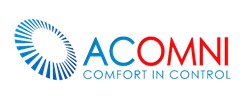
-
2012 November 21
Company Description
Acomni seeks to put homeowners in control of energy decisions.
With about half of monthly energy cost attributed to heating, ventilation, and air conditioning (HVAC), determining the heating and cooling setpoints can have a large impact on monthly expenses. Proponents of programmable thermostats cite savings of 10 – 30% on energy costs, yet in practice actual savings fall short of these values. About half of these users do not take advantage of their programmable features, with difficulties ranging from problems setting the time/date, thermostat interface, mistakenly leaving the thermostat in hold (sets a constant temperature). In the case of users who are able to specify a setpoint schedule, these users do not really know how much they will spend on their heating and cooling until they get a utility bill at the end of the month. Nor is there any feedback to a user to indicate when a new setpoint schedule is advantageous. Acomni seeks to put homeowners in control of energy decisions. We are developing technologies that work with exiting programmable thermostats where we monitor thermostat use and provide end users with mechanisms to (1) correlate heating and cooling setpoints to cost and evaluate tradeoffs, (2) predict future energy usage and cost, and (3) receive expert-guidance to maximize comfort while reducing cost. The main value proposition lies in providing information and guidance to users, not just data, to make energy decisions. Acomni currently has four founding members. Two of the founding members are faculty at the University of Arizona, a third founding member is a PhD candidate at the same University. Together they provide the technical expertise ranging from model-based systems design and integration, design space exploration and optimization, as well as hardware and software design. The last founding member has extensive expertise in the creation of several business ventures and start-ups, developing business plans, raising money, implementing exit strategies, and most importantly, building the right te
-
Manufacturer:
Internet -
Formed:
November 21, 2012 -
Company Website:
-
Company E-mail:
-
Company Address:
Tucson, AZUnited States -
CEO:
- Manny Teran
-
We recognize our sponsors starting at $1 per entry.
Learn more at https://www.ithistory.org/benefits

